How Can I Cut Records At Home?
Introduction
Embarking on the journey of cutting records at home is a thrilling endeavor that merges the realms of artistry and craftsmanship. In an era where digital music dominates, the allure of vinyl records persists, drawing enthusiasts to explore the nostalgic charm and hands-on experience of creating their own analog treasures. For those seeking to delve into the realm of vinyl cutting, understanding the fundamentals and acquiring the necessary tools opens a gateway to a world of personalized music creation. From mastering audio tracks to operating a lathe-cutting machine, the process of cutting records at home embodies both technical precision and creative expression. In this article, we delve into the intricacies of how individuals can embark on this captivating journey, transforming their living spaces into bespoke recording studios and bringing their musical visions to life in the form of custom vinyl creations.
How Can I Cut Records At Home?
Custom vinyl records are typically made using a process called lathe-cutting. With modern lathe Here's an overview of how custom vinyls are made:
- Prepare the Audio: The first step in making your own vinyl records is to prepare the audio that will be transferred onto the vinyl. This could be original music compositions, recordings of live performances, spoken word recordings, or any other audio content. The audio is typically provided in digital format, such as WAV or MP3 files.
- Mastering the Audio: Before cutting the vinyl, the audio files need to be mastered to ensure optimal sound quality and compatibility with the vinyl format. This involves adjusting the volume levels, equalization, and dynamics processing to achieve the desired sound.
- Cutting the Vinyl: Once the audio is mastered, it's ready to be transferred onto the vinyl. This is done using a lathe-cutting machine, which physically engraves grooves into the surface of the vinyl disc. The lathe uses a cutting stylus to carve the grooves, with the movement of the stylus controlled by the audio signal from the mastered audio files.
- Quality Control: As the grooves are cut, the lathe-cutting technician monitors for quality control. While the pressed record process includes a master disc that is inspected and adjusted until a master copy is ready for mass reproduction, a lathe-cut record is a one-off, custom creation that is set in real-time by the lathe operator / expert without a second chance to re-cut or re-master.
- Custom Touches: After the record is , it can be used to create duplicate copies of the custom vinyl record. This is typically done using a process called vinyl pressing, where the master disc is used to create molds (or stampers) that are then used to press the vinyl records. The pressed records are then trimmed, labeled, and packaged for distribution.
Overall, the process of making custom vinyl records involves a combination of technical expertise, specialized equipment, and attention to detail. While it may be more complex and labor-intensive than other methods of music distribution, diy vinyl record pressing (or lathe-cutting) offers a unique and tangible way to share and enjoy music. Whether it's for personal use, promotional purposes, or special occasions like weddings or anniversaries, custom vinyl records can be a cherished and memorable keepsake for music lovers.
Is It Easy To Buy A Record Lathe to Make My Own Custom Vinyl Records?
Acquiring a vinyl record lathe for home use can be more challenging than purchasing other audio equipment due to several factors:
- Availability: Vinyl record lathes are specialized pieces of equipment, and they are not as commonly available as other audio devices like turntables or speakers. You may need to search specifically for suppliers that cater to vinyl cutting enthusiasts or DIY audio enthusiasts.
- Cost: Vinyl record lathes can be expensive, especially if you're looking for professional-grade equipment. While there are DIY kits and smaller-scale lathes available at lower price points, they may still represent a significant investment compared to other audio equipment.
- Technical Expertise: Operating a vinyl record lathe requires a certain level of technical skill and knowledge. You'll need to understand the principles of vinyl cutting, as well as how to calibrate and maintain the lathe properly. Additionally, troubleshooting any issues that arise during the cutting process may require specialized knowledge.
- Space and Resources: Vinyl record lathes are typically large and heavy pieces of equipment, requiring dedicated space for setup and operation. You'll also need access to electricity and possibly ventilation systems, depending on the specific model of lathe you choose.
Given these factors, purchasing a vinyl record lathe may not be as straightforward or accessible as buying other audio equipment. However, if you're passionate about vinyl cutting and willing to invest the time, effort, and resources into acquiring and mastering the necessary equipment, it can be a rewarding and fulfilling hobby. Additionally, there are online communities and forums where enthusiasts share tips, advice, and resources for those interested in cutting their own vinyl records at home.
Let’s Assume I Have A Custom Vinyl Lathe…
Cutting records at home can be a rewarding and creative process, allowing you to create personalized vinyl recordings. While professional vinyl mastering and pressing facilities use specialized equipment and techniques, it's still possible to cut records at home with the right tools and materials. Here's a basic overview of how you can cut records at home:
- Gather Your Materials:
- Vinyl blanks: These are blank vinyl discs specifically designed for cutting and recording music. You can purchase them from specialty suppliers online.
- Record cutting lathe: This is the primary tool used to cut grooves into the vinyl blanks. While professional-grade lathes are expensive and complex, there are DIY lathe kits available for home use.
- Cutting stylus: The cutting stylus is the needle-like tool that physically engraves the grooves into the vinyl. It's essential to use a high-quality stylus designed for cutting vinyl records.
- Audio source: You'll need your music or audio recordings in digital format to transfer onto the vinyl blanks. This could be original compositions, recordings of live performances, or tracks sourced from digital audio files.
- Prepare Your Audio:
- Before cutting the vinyl, you'll need to prepare your audio files for transfer. This involves converting your digital audio files into a format suitable for cutting onto vinyl. You may need to adjust the volume levels, equalization, and other parameters to ensure optimal playback quality on vinyl.
- Set Up Your Cutting Lathe:
- Follow the manufacturer's instructions to set up your cutting lathe. This typically involves assembling the components, calibrating the stylus, and ensuring proper alignment and tracking.
- Cut Your Records:
- Once your lathe is set up and calibrated, it's time to start cutting your records. Carefully place a blank vinyl disc onto the lathe's turntable and secure it in place. Then, use your audio source to play the music or recordings you want to transfer onto the vinyl.
- As the music plays, the cutting stylus will engrave grooves into the surface of the vinyl, creating a physical representation of the audio waveform. Monitor the cutting process closely to ensure that the grooves are being cut accurately and evenly.
- Depending on the length and complexity of the audio, you may need to cut multiple tracks onto each side of the vinyl disc. Use a lathe with automatic or manual indexing capabilities to create separate tracks with distinct grooves.
- Finishing Touches:
- Once you've finished cutting your records, carefully remove them from the lathe and inspect them for any defects or imperfections. Use a record cleaning brush to remove any debris or dust from the surface of the vinyl.
- If desired, you can further customize your records by adding labels, artwork, or other decorations to the disc surface. This can enhance the visual appeal of your homemade records and make them truly unique.
- Playback and Enjoyment:
- Once your records are cut and finished, it's time to enjoy the fruits of your labor! Use a turntable with a compatible stylus to play your homemade records and experience the joy of hearing your own music on vinyl.
While cutting records at home can be a challenging and involved process, it's also a rewarding and creative endeavor that allows you to bring your music to life in a tangible and timeless format. With the right tools, materials, and techniques, you can create personalized vinyl recordings that you'll treasure for years to come.
And If I Am One Of The 99+% Of People That Don’t Own A Record Lathe?
Freestyle Vinyl offers a unique and personalized experience for music enthusiasts by allowing them to create custom vinyl records featuring their favorite songs or audio recordings. Here's an overview of what Freestyle Vinyl offers:
- Custom Vinyl Record Creation: Freestyle Vinyl enables customers to create custom vinyl records tailored to their preferences. Whether it's a curated playlist of favorite songs, original music compositions, spoken word recordings, or special messages, customers have the freedom to choose the content they want to immortalize on vinyl.
- Easy Ordering Process: Freestyle Vinyl provides a user-friendly online platform where customers can easily upload their audio files and customize their vinyl records. The ordering process is straightforward, allowing customers to select options such as vinyl color, label design, and packaging preferences.
- High-Quality Vinyl Pressing: Freestyle Vinyl uses professional-grade vinyl pressing equipment and techniques to ensure high-quality results. The vinyl records are pressed using durable materials and precision engineering, resulting in clear audio reproduction and long-lasting performance.
- Customizable Designs: In addition to choosing the audio content, customers can customize the design of their vinyl records. Freestyle Vinyl offers options for personalized labels, album artwork, and packaging, allowing customers to create a truly unique and memorable product.
- Gift Options: Custom vinyl records from Freestyle Vinyl make thoughtful and one-of-a-kind gifts for music lovers, audiophiles, or anyone with a special connection to the audio content. Customers can add personalized messages or dedications to their vinyl records, making them ideal for birthdays, weddings, anniversaries, or other occasions.
- Variety of Packages: Freestyle Vinyl offers a variety of package options to suit different preferences and budgets. Whether customers are looking for a single vinyl record or larger quantities for promotional purposes or events, Freestyle Vinyl can accommodate their needs.
Overall, Freestyle Vinyl offers a creative and innovative way for customers to express themselves through music and create unique, tangible keepsakes that can be cherished for years to come. With its commitment to quality, customization, and customer satisfaction, Freestyle Vinyl provides a memorable and enjoyable experience for music enthusiasts of all kinds.
Conclusion
As we conclude our exploration into the art of cutting records at home, it's evident that the allure of vinyl extends far beyond mere audio playback. It embodies a tangible connection to music, inviting enthusiasts to immerse themselves in the timeless craft of vinyl cutting. While mastering this process requires dedication and practice, the rewards are abundant, offering a deeply satisfying blend of creativity and technical expertise. For those seeking to embark on this journey but may lack the equipment or resources, options like Freestyle Vinyl provide an accessible avenue to realize their vision. With Freestyle Vinyl, individuals can effortlessly transform their audio creations into custom vinyl records, each imbued with personal meaning and artistic flair. Whether as a unique gift, a cherished memento, or a testament to creative ingenuity, custom vinyl records from Freestyle Vinyl offer a timeless expression of musical passion and individuality.




